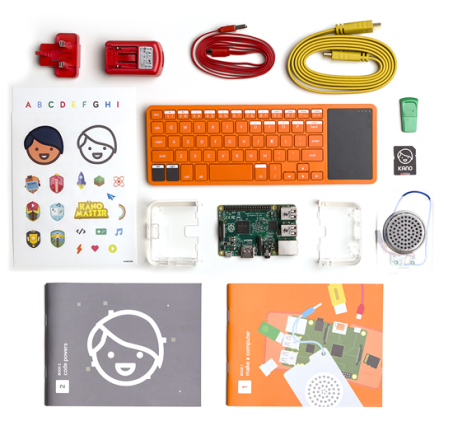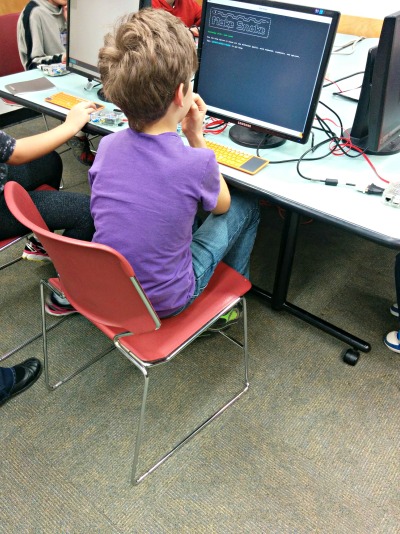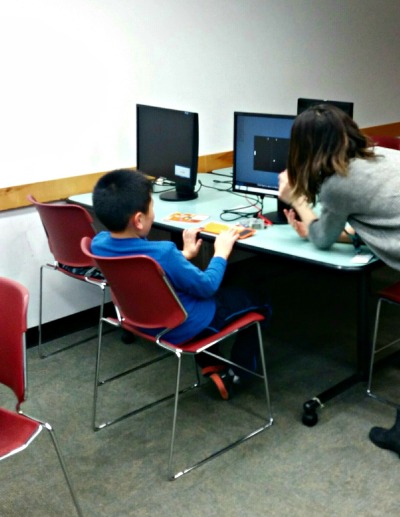Learn how to code and build software with Raspberry Pi Microcomputers. Suitable for beginners. For ages 8-12.
Being a 21st century public librarian means being well-versed in modern technology, and our library system in particular is committed to bridging the “digital divide” that can exist in many parts of our city, and to supporting children’s development of digital literacy.
Microprogramming with Raspberry Pi is a fairly new library program that introduces children to basic programming concepts through games and interactive activities. We use Kano computer kits, which come with almost everything you need to make a mini computer – just add your own screen and connector cables, plug it in to a power source, and you’re ready to go.

Intended to be “as easy and fun as LEGO” and marketed to kids as young as 6, Kano uses simple, popular games like Pong, Snake and Minecraft to introduce children to programming commands, and challenges help make coding exciting.
HEED MY WARNINGS, ALL YEE WHO COME BEFORE ME
Here are a few things to consider if you want to host a microprogramming program at your school / library:
More adults = better program
- Coding programs work best when kids can get lots of one-to-one, hands-on support. Kids will likely come with varying levels of experience and confidence, and some will need more hand-holding than others.
- Also – COMPUTERS CAN BE EVIL. Programs will crash, screens will go black, games will freeze. Trying to solve a hardware problem while explaining the next part of the program to the rest of the group and helping two other kids get up to speed is a nightmare, and can impact everyone’s enjoyment of the event (not to mention dent your sanity).
Give yourself more time to set up than you think you could possibly need
- Because you’ll need it. Cords are fiddly. Outlets need extension cords. Desks need to be rearranged. Monitors are heavy. If you end up not needing all the set up time you set aside, you can use that extra time to prepare yourself.
You don’t have to be a coding guru, but do take the time to familiarize yourself with the activities
- Seems like a no-brainer, but it’s worth mentioning again, because you really can’t fudge your way through a coding program. Make sure you take the time to familiarize yourself with the hardware and the software, especially if you’re getting the kids to assemble the computer kits themselves. Kids can smell fear, so make sure you go into the program with your head held high and an understanding of the programs in your pocket.

Keep the program small
- Less kids = more individualized attention = happier coders
Divide up your audience
- If you run a computer programming program on your own, consider offering separate programs for kids 7-9 and/or 10-12. Regardless of their technical prowess, kids’ maturity levels and attention spans tend to differ at different ages. Younger children might need more hand-holding and more help staying focused on a task, which can make it difficult to ensure that older children get enough support as well.
Teach Like a Grandma
- Education researcher Sugata Mitra talks about teaching using “the method of the grandmother” – encouraging children to persevere through obstacles and solve challenges themselves. You will inevitably hear a chorus of “my computer’s not working!”, and many of these issues can be solved by walking through the manual and examining the situation for clues. Encourage children to investigate and experiment, rather than simply solving their problems for them – children’s programs are as much about personal skills development as they are about literacy development, and self-sufficiency and self-confidence are very powerful skills for any child to possess.

Have fun!
- Learning a new skill can be intimidating – I’m the first to admit I’m not a natural when it come to computers. But a laugh and a smile will get you through a lot of catastrophes, especially if you’re willing to laugh at yourself!